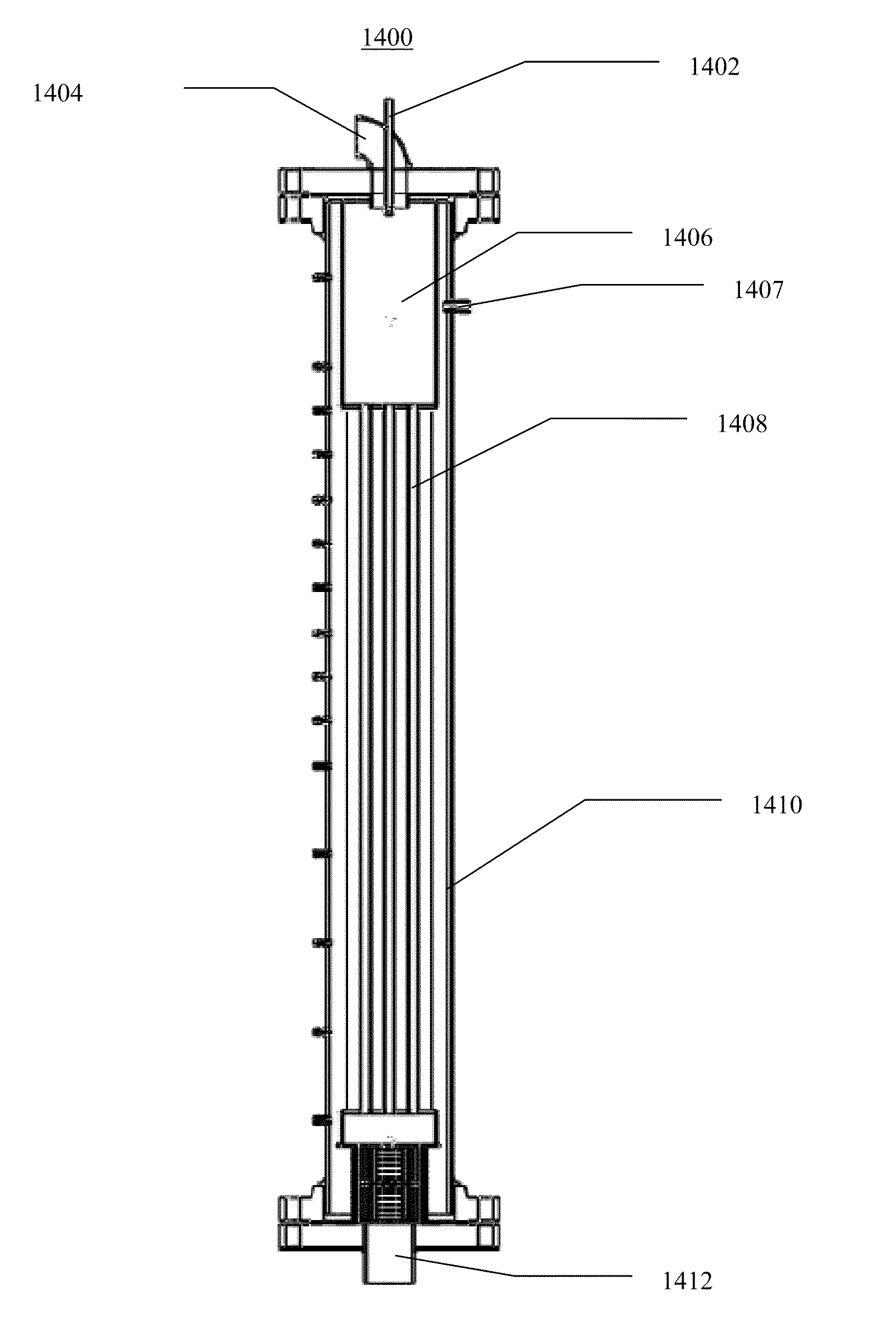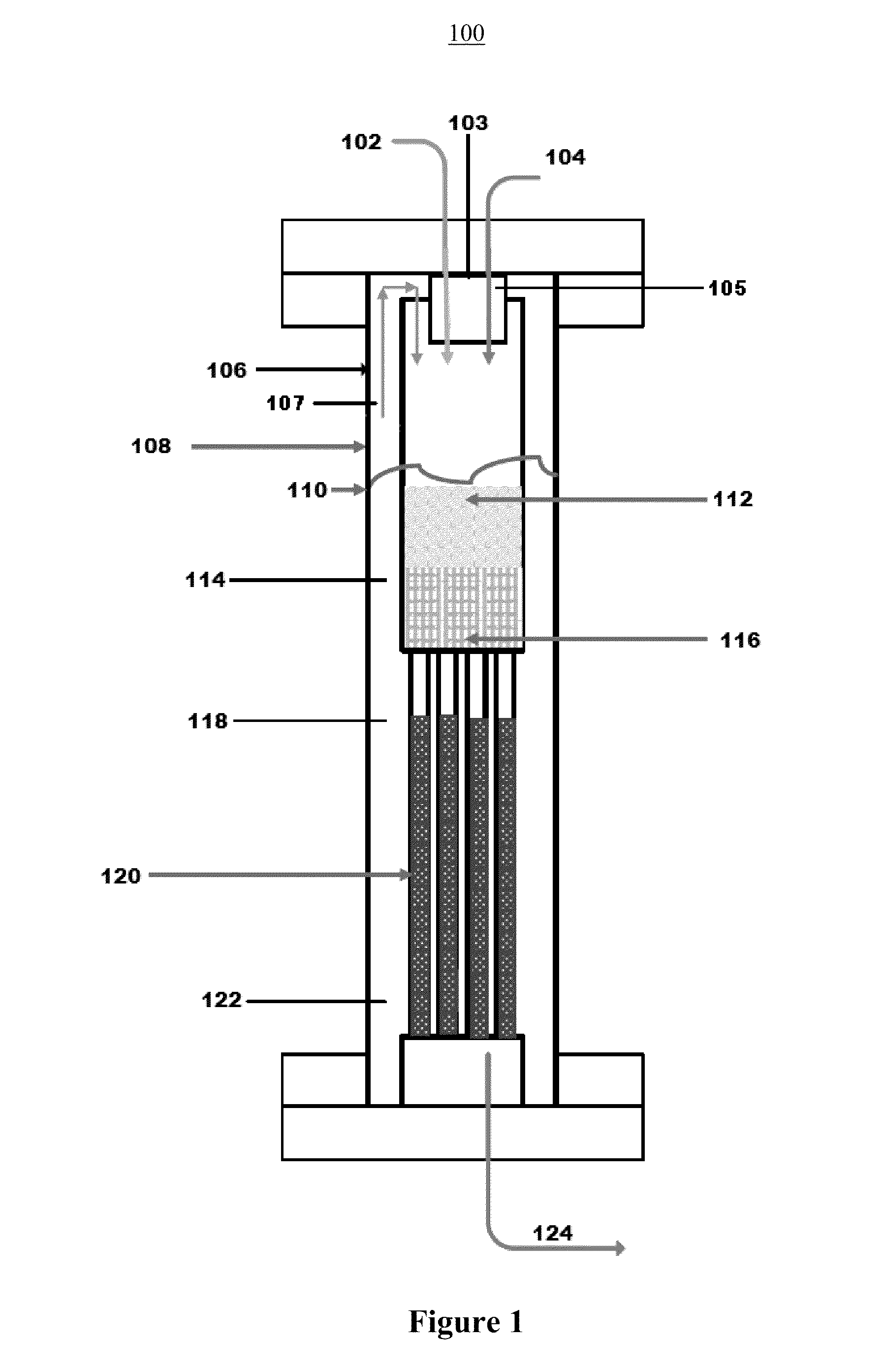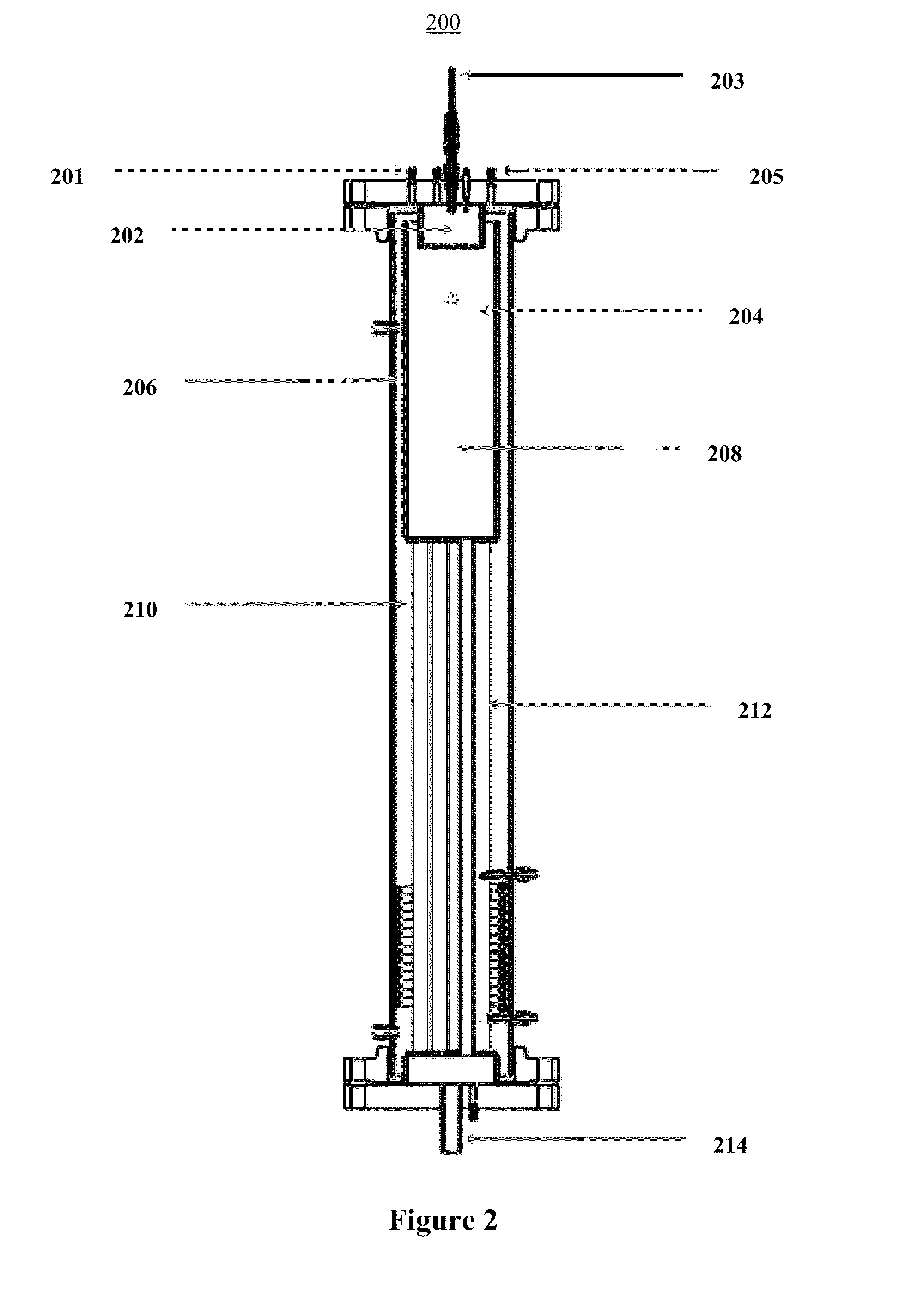Compact natural gas steam reformer with linear countercurrent heat exchanger
a technology of countercurrent heat exchanger and natural gas steam reformer, which is applied in the direction of process and machine control, instruments, and well accessories, etc., can solve the problems of difficult and costly construction of cosub>2 /sub>pipelines, hampered use of cosub>2 /sub>pipelines, and inability to construct cosub>2 /sub>pipelines, etc., to achieve enhanced oil recovery and the economical production of low-carbon emission
- Summary
- Abstract
- Description
- Claims
- Application Information
AI Technical Summary
Benefits of technology
Problems solved by technology
Method used
Image
Examples
operation examples
[0111]FIG. 4 illustrates an example of a use case 400 of the natural gas reformer according to one embodiment of the present invention in which the CO2 stream is used for EOR and the H2 stream is used for electricity production. Natural gas from a natural gas source 402, either from off-site or on-site, is fed via a line into sulfur removal module 404, if necessary to remove sulfur. Desulfurized natural gas is fed via another line into methane reformer module 100. Water from water tank 408, and oxygen from oxygen tank 406, is added to methane reformer 100. The exhaust driver gas exiting the methane reformer 100 is passed through a set of heat exchangers (not shown). The cooled driver gas is passed to separator module 412, in which it is separated into a portion rich in hydrogen gas 414, and a portion rich in CO2 gas. The CO2-rich gas portion is sent to compressor module 422. The compressor module 422 compresses the CO2-rich driver gas to a pressure appropriate for the oil well. Fina...
PUM
 Login to View More
Login to View More Abstract
Description
Claims
Application Information
 Login to View More
Login to View More - R&D
- Intellectual Property
- Life Sciences
- Materials
- Tech Scout
- Unparalleled Data Quality
- Higher Quality Content
- 60% Fewer Hallucinations
Browse by: Latest US Patents, China's latest patents, Technical Efficacy Thesaurus, Application Domain, Technology Topic, Popular Technical Reports.
© 2025 PatSnap. All rights reserved.Legal|Privacy policy|Modern Slavery Act Transparency Statement|Sitemap|About US| Contact US: help@patsnap.com



